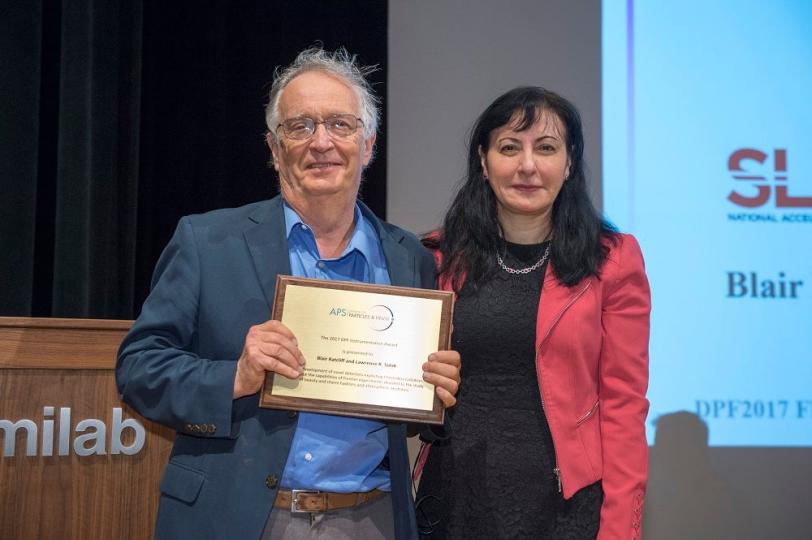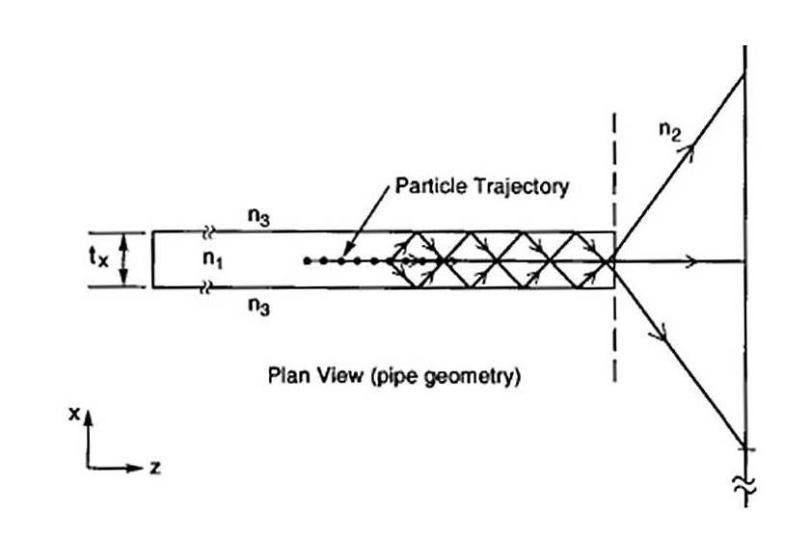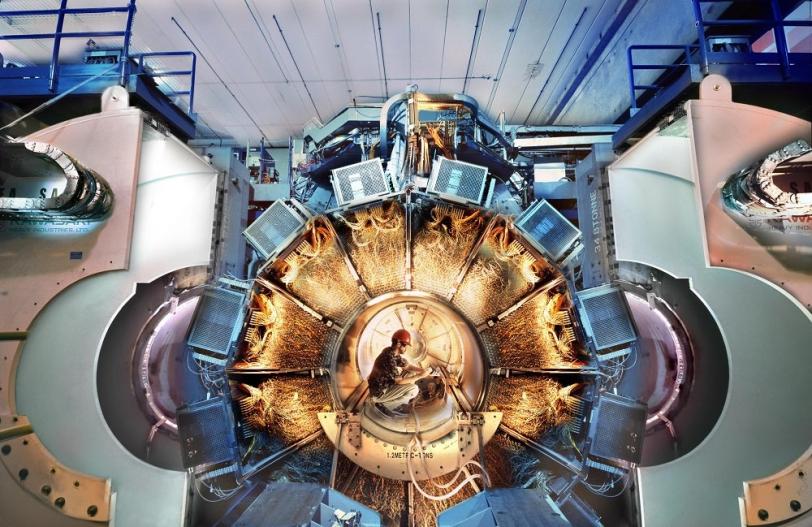SLAC’s Blair Ratcliff Wins American Physical Society’s Instrumentation Award
The emeritus physicist was honored for the development of novel detectors that have greatly advanced experiments in particle physics, especially BABAR, which looked into the matter-antimatter imbalance of the universe.
By Manuel Gnida
When the Big Bang gave birth to our universe about 14 billion years ago, it should have created equal amounts of matter and antimatter. Yet, today’s cosmos is dominated by matter. The BABAR experiment, which operated at the Department of Energy’s SLAC National Accelerator Laboratory from 1999 to 2008, was one of the experiments trying to explain this cosmic imbalance.
Now, the American Physical Society has recognized Blair Ratcliff, an emeritus physicist at SLAC and Stanford University, with the 2017 Division of Particles and Fields Instrumentation Award “for the development of novel detectors exploiting Cherenkov radiation” – an advance that greatly enhanced BABAR’s capabilities and influenced the design of other experiments. He shares the prize with Lawrence Sulak from Boston University.

BABAR looked for differences in the decay of particles called B mesons and their antiparticles, produced in collisions of electron and positron beams from SLAC’s PEP-II facility. Although the experiment did demonstrate that the matter-antimatter imbalance predicted by the Standard Model of particle physics is essentially correct, this is insufficient as an explanation for the dominance of matter in the universe.
A crucial step in the analysis of the BABAR data was the identification of particles coming out of the collisions. Ratcliff invented a detector that accomplished exactly that.
“It was a unique way of particle identification, something that hadn’t been done before,” Ratcliff says. “It contributed to the outstanding performance of BABAR.” The instrumentation award, he says, is also an acknowledgment of the BABAR collaboration’s open mindset, which embraced innovative methods and took on challenging engineering tasks to do exceptional physics experiments.
Identifying Subatomic Particles
The key component was the “detector of internally reflected Cherenkov light,” or DIRC – a 16-foot-long hollow cylinder at the center of the BABAR detector, pieced together from 144 very thin rectangular bars made of very pure fused silica glass, with a large light-sensitive detector at one end.
When a particle produced in the experiment’s particle collisions passed through the glass with enough speed, it generated what is known as Cherenkov light. The angle at which the light was emitted revealed the particle speed. Combined with the particle momentum, which was measured with a separate detector element, this allowed the determination of the particle mass, or its identity.
However, measuring the angle couldn’t be done right where the light was produced because inserting light-sensitive detectors into the heart of the BABAR detector would have interfered with the experiment.
“The DIRC solved this problem,” Ratcliff says. “Like light bounces off the inner wall of an optical fiber over and over again and gets transported over long distances, the Cherenkov light was reflected multiple times inside the fused silica bars, transporting it from where it was created to the camera at the end of the BABAR detector. The really important thing was that the angular information didn’t get lost in the process.”

Impactful Career in Particle Physics
Over the past 25 years, DIRCs have seen further development and have become essential components in a number of particle physics detectors, including the Japanese Belle II, a next-generation experiment for studies of B meson decays; GlueX at the DOE’s Thomas Jefferson National Accelerator Facility, which aims to understand the confinement of elementary quarks to composite particles; and the planned PANDA experiment in Germany, which will study physics of the fundamental strong nuclear force.
“Blair’s tremendous contributions to instrumentation have had and will have significant impact on how we do particle physics experiments – at SLAC and elsewhere in the world,” says JoAnne Hewett, director of SLAC’s Division of Elementary Particle Physics and deputy associate lab director for the Science Directorate. “We’re delighted for Blair and proud as a team that he has been recognized.”
Ratcliff has spent most of his career at SLAC. He first came to the lab in 1966, after graduating from Grinnell College with a bachelor’s degree in physics. He subsequently pursued his graduate studies at Stanford, working with SLAC’s Burton Richter. After receiving a master’s degree in 1968 and a doctorate in 1972, both in physics, Ratcliff spent time in Europe, at the U.K.’s Rutherford Lab and at CERN, the European particle physics laboratory.
Since his return to SLAC in 1975, he has contributed to numerous research programs in particle physics at the lab. He served as the SLAC BABAR department head from 2002 to his retirement in March 2017.
Now an emeritus physicist, Ratcliff has no intention of slowing down. In addition to reviewing scientific papers that continue to describe findings based on BABAR data, he closely follows SLAC’s involvement in new particle physics experiments, such as the LZ dark matter experiment. He also provides global physics community service, including his roles as an advisor for Belle II, a technical design reviewer for detector upgrades at CERN’s Large Hadron Collider and as a DOE reviewer for the massive next-generation LBNF/DUNE neutrino project.

For questions or comments, contact the SLAC Office of Communications at communications@slac.stanford.edu.
SLAC is a multi-program laboratory exploring frontier questions in photon science, astrophysics, particle physics and accelerator research. Located in Menlo Park, Calif., SLAC is operated by Stanford University for the U.S. Department of Energy's Office of Science.
SLAC National Accelerator Laboratory is supported by the Office of Science of the U.S. Department of Energy. The Office of Science is the single largest supporter of basic research in the physical sciences in the United States, and is working to address some of the most pressing challenges of our time. For more information, please visit science.energy.gov.





